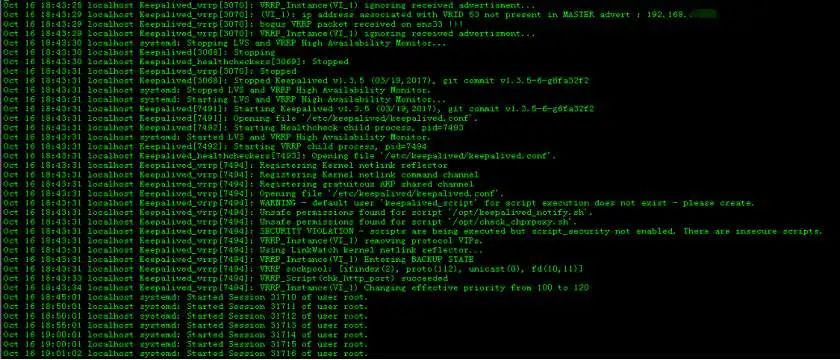Figure:

HDRF
Let Ω ′ \Omega' Ω′ be the incident solid angle, Ω \Omega Ω is leaving solid angle. Consider the BRDF of a Lamvertian target is 1 π \frac{1}{\pi} π1, the BRF is 1. The HDRF of a target is defined as:
R h e m ( Ω ) = Φ r Φ r l a m = L r L r l a m = ∫ 2 π − f r ( Ω ′ , Ω ) d E ′ ∫ 2 π − 1 π d E ′ = ∫ 2 π − f r ( Ω ′ , Ω ) ∣ μ ∣ I ′ d Ω ′ 1 π ∫ 2 π − I ′ ∣ μ ′ ∣ d Ω ′ = I 1 π ∫ 2 π − I ′ ∣ μ ′ ∣ d Ω ′ , μ > 0. \begin{aligned} R^{hem}(\Omega)&=\frac{\Phi_r}{\Phi_r^{lam}}=\frac{L_r}{L_r^{lam}}\\&=\frac{\int_{2\pi-}f_r(\Omega',\Omega)dE'}{\int_{2\pi-}\frac{1}{\pi}dE'}=\frac{\int_{2\pi-}f_r(\Omega',\Omega)|\mu| I'd\Omega'}{\frac{1}{\pi}\int_{2\pi-}I'|\mu'| d\Omega'}\\ &= \frac{I}{\frac{1}{\pi}\int_{2\pi-}I'|\mu'| d\Omega'}, \ \ \mu>0. \end{aligned} Rhem(Ω)=ΦrlamΦr=LrlamLr=∫2π−π1dE′∫2π−fr(Ω′,Ω)dE′=π1∫2π−I′∣μ′∣dΩ′∫2π−fr(Ω′,Ω)∣μ∣I′dΩ′=π1∫2π−I′∣μ′∣dΩ′I, μ>0.
This is equivelent to:
H D R F = < I ( Ω ) > 0 1 π ∫ 2 π − < I ( Ω ′ ) > 0 ∣ Ω ′ ⋅ n 1 ∣ d Ω ′ HDRF=\frac{<I(\Omega)>_0}{\frac{1}{\pi}\int_{2\pi-}<I(\Omega')>_0 |\Omega'\cdot n_1|d\Omega'} HDRF=π1∫2π−<I(Ω′)>0∣Ω′⋅n1∣dΩ′<I(Ω)>0
Here, n 1 n_1 n1 is the outward normal, < ⋅ > <\cdot> <⋅> denotes mean over upper surface δ V t \delta V_t δVt , and we will ignore this notion for a simplification in remaining part of the blog. HDRF depends on atmosphere conditions. HDRF is the ratio of real radiance to the radiance reflected from a lambertian target of canopy upper surface .
HDRF has no unit.
BRF
If no atmosphere, *i.e.,*incident solar radiation at upper canopy boundary δ V t \delta V_t δVt is a parallel beam of light, the HDRF become BRF:
B R F = I ( Ω ) 1 π I ( Ω ′ ) ∣ Ω ′ ⋅ n 1 ∣ = I ( Ω ) I L a m BRF=\frac{I(\Omega)}{\frac{1}{\pi}I(\Omega')|\Omega'\cdot n_1|}=\frac{I(\Omega)}{I_{Lam}} BRF=π1I(Ω′)∣Ω′⋅n1∣I(Ω)=ILamI(Ω)
Here, I L a m I_{Lam} ILam is the radiance over upper surface of the canopy from a Lambertian target under the same illumination.
BRF does not depend on atmosphere conditions, only varies with Ω \Omega Ω and Ω ′ \Omega' Ω′.
BRF has no unit.
BRDF
BRDF describes the scattering of a parallel beam of incident radiation from one direction into another direction. However, the denominator of BRDF is the incident flux, not the radiance.
B R D F = I ( Ω ) ∫ 2 π + I L a m ∣ μ ∣ d Ω = I ( Ω ) I L a m π = I ( Ω ) E L a m BRDF=\frac{I(\Omega)}{\int_{2\pi+}I_{Lam}|\mu| d\Omega}=\frac{I(\Omega)}{I_{Lam}\pi}=\frac{I(\Omega)}{E_{Lam}} BRDF=∫2π+ILam∣μ∣dΩI(Ω)=ILamπI(Ω)=ELamI(Ω)
From the second equality, we could get that π ⋅ B R D F = B R F \pi \cdot BRDF=BRF π⋅BRDF=BRF.
BRDF has unit s r − 1 sr^{-1} sr−1.
BHR
The BHR is defined as mean irradiance exitance to incident irradiance:
A = ∫ 2 π + I ( Ω ) ∣ μ ∣ d Ω ∫ 2 π − I ( Ω ′ ) ∣ μ ′ ∣ d Ω ′ A=\frac{\int_{2\pi+}I(\Omega)|\mu|d\Omega}{\int_{2\pi-}I(\Omega')|\mu'|d\Omega'} A=∫2π−I(Ω′)∣μ′∣dΩ′∫2π+I(Ω)∣μ∣dΩ
BHR has no unit.
DHR
If no atomophere, BHR become DHR:
D H R = ∫ 2 π + I ( Ω ) ∣ μ ∣ d Ω I L a m ∣ μ ′ ∣ DHR=\frac{\int_{2\pi+}I(\Omega)|\mu|d\Omega}{I_{Lam}|\mu'|} DHR=ILam∣μ′∣∫2π+I(Ω)∣μ∣dΩ
DHR has no unit.
For Lambertian Surface and no atmosphere
HDRF becomes:
H D R F = < I ( Ω ) > 0 1 π ∫ 2 π − < I ( Ω ′ ) > 0 ∣ Ω ′ ⋅ n 1 ∣ d Ω ′ = π I M HDRF=\frac{<I(\Omega)>_0}{\frac{1}{\pi}\int_{2\pi-}<I(\Omega')>_0 |\Omega'\cdot n_1|d\Omega'}=\frac{\pi I}{M} HDRF=π1∫2π−<I(Ω′)>0∣Ω′⋅n1∣dΩ′<I(Ω)>0=MπI
DHR becomes
D H R = ∫ 2 π + I ( Ω ) ∣ μ ∣ d Ω I L a m ∣ μ ′ ∣ = π I M DHR=\frac{\int_{2\pi+}I(\Omega)|\mu|d\Omega}{I_{Lam}|\mu'|}=\frac{\pi I}{M} DHR=ILam∣μ′∣∫2π+I(Ω)∣μ∣dΩ=MπI
BHR becomes
A = I ∫ 2 π + ∣ μ ∣ d Ω ∫ 2 π − I ( Ω ′ ) ∣ μ ′ ∣ d Ω ′ = I π M A=\frac{I\int_{2\pi+}|\mu|d\Omega}{\int_{2\pi-}I(\Omega')|\mu'|d\Omega'}=\frac{I\pi}{M} A=∫2π−I(Ω′)∣μ′∣dΩ′I∫2π+∣μ∣dΩ=MIπ
BRF becomes:
B R F = I ( Ω ) 1 π I ( Ω ′ ) ∣ Ω ′ ⋅ n 1 ∣ = π I M BRF=\frac{I(\Omega)}{\frac{1}{\pi}I(\Omega')|\Omega'\cdot n_1|}=\frac{\pi I}{M } BRF=π1I(Ω′)∣Ω′⋅n1∣I(Ω)=MπI
So they are the same.



















